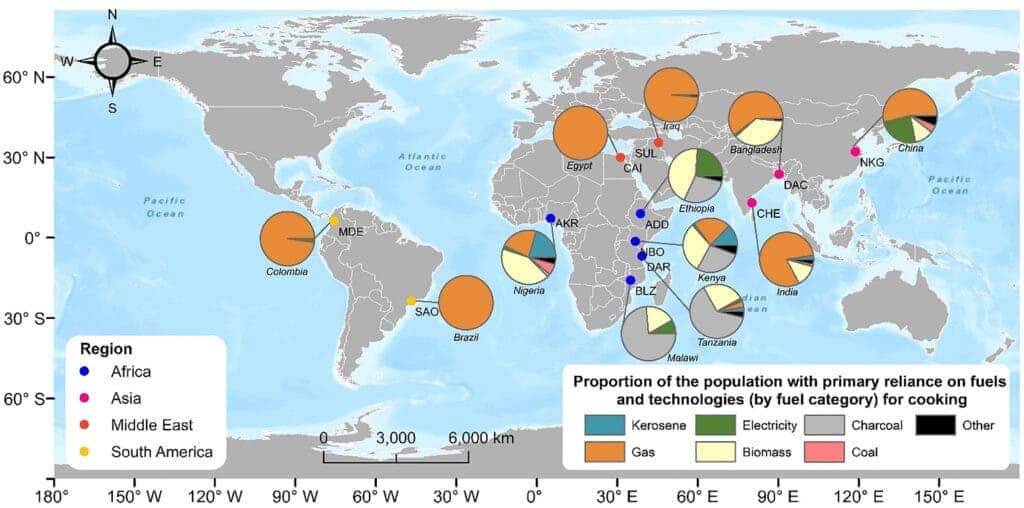Kitchens in low-income homes across major global cities are facing an unseen air pollution crisis, driven by fuel choices, poor ventilation, and the way food is cooked, among other factors, according to a new study. Researchers found that three-quarters of the kitchens in low-income homes in 12 cities are heavily polluted by cooking emissions, raising fears that the same thing could be affecting billions of people around the world.

Globally, over four million people die prematurely from illnesses linked to indoor air pollution (IAP) from inefficient cooking practices — a strikingly large number for something so common. People spend about 80% of their time indoors, so managing IAP has become an essential need for protecting human health. It’s also a target included in the UN’s Sustainable Development Goals (SDG).
Evidence shows air pollutant concentrations in the indoor largely exceed those in the outdoor due to confined conditions, which leads to a 100-times higher chance of indoor pollutants infiltrating the lungs. Exposure to high levels of air pollution has been linked to numerous adverse health effects such as heart diseases and stroke.
For many low-income and middle-income countries, improving housing standards has become a priority to tackle air pollution, with studies showing a big increase in particulate matter. Efforts have included the use of improved cookstoves such as e-cookers and clean fuels as a way of preserving human health and the environment.
Now, for the first time, researchers have carried out a global assessment to better understand exposure to particulate matter. Their study focused on a relatively small sample: 60 homes in 12 cities across four continents. They carried out PM monitoring to produce a comparable dataset, using a unified methodology.
“There’s a notable wealth divide when it comes to indoor air quality and also a gender divide, as women are typically disproportionately impacted by pollution caused by cooking, especially in the developing world. This problem must be addressed to improve health and equality,” Prashant Kumar, study author, said in a statement.
Cooking and air pollution
The worst air pollution levels were found in Dhaka, Bangladesh, where kitchens are generally small and people cook for long periods of time, in some cases frying food – the cooking activity that emits most polluting particles. On the other hand, the cleanest air of the surveyed sites was found in Medellin, Colombia, as kitchens are bigger and people use clean cooking fuels.

Cooking on charcoal was found to cause the highest levels of kitchen pollution, over three times than when cooking with liquified petroleum gas (LPG). The cooking method also made a difference, as residents of Dhaka or Nairobi spent over 40% of their cooking time frying, while those in Cairo focused more on boiling and stewing food.
For the researchers, the best strategy to reduce air pollution exposure during cooking is to eliminate the emissions at the source, using sustainable means such as solar-driven stoves. However, as such a change would be gradual, they gave a list of recommendations that are based on the findings and therefore evidence-based.
For example, using extraction fans can reduce PM2.5 exposure by about 2.3 times compared with natural ventilation. Also, using cleaner cooking fuels such as natural gas or LNG instead of charcoal can make a big difference, as well as avoiding passive occupancy during cooking, minimizing cooking times, and rethinking cooking methods.
“Improving airflow, using cleaner fuels, filtering efficiency of cooking hoods, and frying less are all ways to reduce the pollution people breathe from cooking. Around the world, kitchens are often where people congregate, but these findings suggest that cooks should discourage family and friends from being around when they’re cooking,” Kuma concluded in a statement.
The study was published in the journal Environment International.


